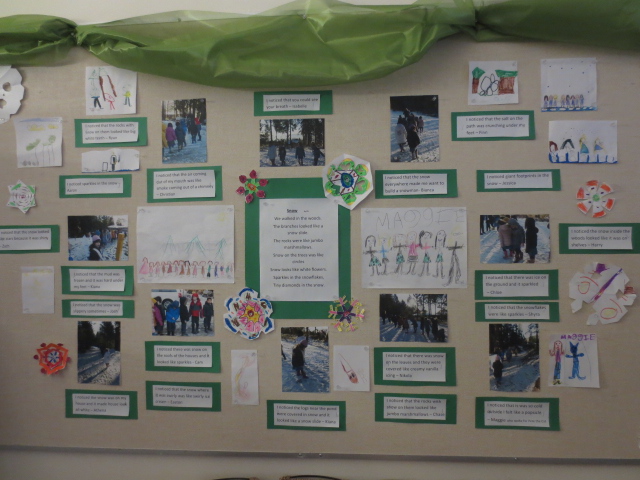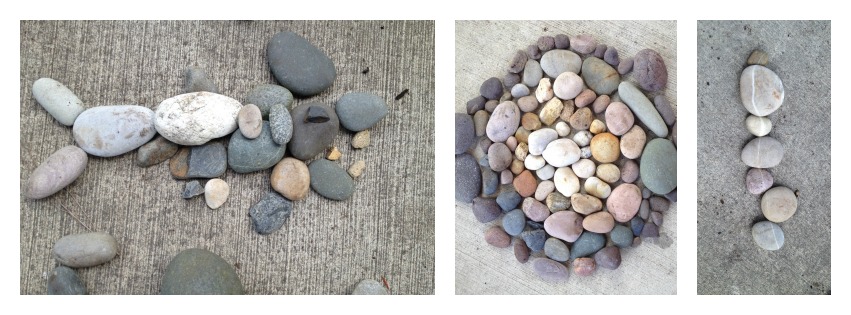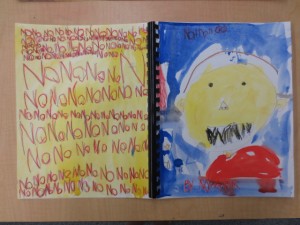My Practice
The Reggio Emilia Approach
When I wrote my first ‘philosophy of education’ statement I discussed the importance of creativity, risk taking, hands-on education, and collaboration. In my Early Years Education diploma I was introduced to an approach to education which aligned with these values I highlighted in my statement, the Reggio Emilia approach. The artistic and aesthetic values in Reggio Emilia also resonated with my artistic background.
Now that I have been in a classroom inspired by Reggio Emilia, I have been able to incorporate many of the materials and practices into my teaching. This approach requires the teacher to play several roles as a facilitator, observer, and collaborator. This approach creates an ‘active’ learning environment for both the students and teachers which is important to me. The learning opportunities that occur through provocations and inquiry projects remain open to student choice within a framework. “Because children in active learning settings make choices based on their own interests and questions, and then have time to follow through on their plans, they are intensely involved with people and materials and freely share their ideas, findings, and observations” (Hohmann & Weikart, 1995, p.25).
This approach allows students to experiment and take the risks required for a student to grow as an individual. Sir Ken Robinson is one individual whose thoughts align with mine when it comes to the importance of fostering the growth of creative minds. In his TED talk (2006) he says:
“…Kids will take a chance…They’re not frightened to be wrong. Now, I don’t mean to say that being wrong is the same thing as being creative. What we do know is, if you’re not prepared to be wrong, you’ll never come up with anything original…And by the time they get to be adults, most kids have lost that capacity. They have become frightened to be wrong…We stigmatize mistakes…And the result is, we are educating people out of their creative capacities.”
Inquiry-Based Learning

Theory created after hands-on exploration of science experiment which required collaboration, creativity, and sharing of previous ideas and knowledge.
Inquiry projects in the classroom provoke students to think deeper, to make connections, to collaborate, and to demonstrate their learning in a multitude of ways. When students are able to question, research, explore and examine a topic within a frame that is meaningful to them the engagement is high and learning is sustained. Sir Ken Robinson discusses the importance of providing students options in how they will learn in relation to career and motivation in his TED Talk “Bring on the Revolution.” In it he brought up something very interesting which has been important for me when looking at what I am doing in my classroom and how the students perceive it.
He said “you know this, if you’re doing something you love, an hour feels like five minutes. If you’re doing something that doesn’t resonate with your spirit, five minutes feels like an hour. And the reason so many people are opting out of education is because it doesn’t feed their spirit, it doesn’t feed their energy or passion” (Robinson, 2010).
I saw this passion first hand with an inquiry project I assisted with in a Kindergarten classroom. The project began with a change of location for our spring field trip from Stanley Park to Van Dussen Gardens. The theme of the trip was ‘pond peering.’ This change was presented to the class and the kids were all excited. On the field trip the children were introduced to various plants, insects, and other life in the pond. I took photos and documented what children were saying as we followed our guides through the garden.
The following weeks we worked with the children in stations to investigate the pond further. At one station the children looked through photographs from the trip and created drawings based on what they found interesting which provoked questions and conversations about facts they had learned. At a second station the children recreated a pond habitat using animal and insect figures, rocks and coloured gems, and wood pieces on a light table. At a third station the students used puppets and stuffed animals to create categories and organize in their own way. The final station was where they looked through books and came up with an individual research question and worked with a teacher to find an answer. What was interesting here was that there were very few students who were interested in answering the same question.
In the final stage of our inquiry project, the students shared their knowledge with one another and the class. We started with in-class presentations where the children’s questions were posed, the students gave ideas, and then the child who posed the question presented what they had learned in their research. We then presented to the school by posting photos, drawings, the children’s research, and a large collaborative mural of the pond habitat in our hallway.
The children learned a lot through this experience. They learned to question, research, and present information in a variety of ways. Above all the students demonstrated that energy and passion Sir Ken Robinson speaks about for their collaborative project in their own ways.
Documentation and Assessment
Documentation is also tied with the Reggio Emilia approach and has provided me with a new way to look at student learning, to assess student strengths and needs, and to share and revisit learned material. Michele Sims discusses the role of the teacher as “teacher-researcher” throughout her article “How My Questions Keep Evolving” (Sims, 1993 ). She says that it is important as teachers, to keep researching, testing, and trying new things in the classroom. If we keep this idea of a researcher in mind we will always be looking forward and our students will benefit from our constant questioning of what we are doing, why we are doing it, and how we can make it even better.
Pedagogical Documentation Displays

Pedagogical documentation board displaying photos, drawings, class written poem, and students comments about our winter walk in the forest.
Rather than just displaying the children’s art work or one writing sample on the wall, these displays combine many different artifacts to display what the inspiration, the process, and the products for what is being learned or explored in the classroom. This can be done by posting student comments and questions, photos, student writing, sketches, artwork, audio, and video. These displays allow students to revisit their learning and to add to it or provoke more questions and to share with other students, teachers, parents, and community members. In terms of using these displays for assessment, I think it provides a way for students to reflect and self-assess.
Student Portfolios
Like pedagogical displays, I believe student portfolios which students have free access to can provide students with ownership over their learning and allow them to revisit, reflect, and assess their own learning. In our classroom we keep binders accessible to the students where teachers and students may add artifacts. These artifacts included pieces from previous displays in the classroom, student comments, photos, and work throughout the year. Last year when we introduced the books, which had some artifacts already inside, the conversations that occurred from the students’ exploration of them was so interesting. I overheard students recalling experiences, facts, and sharing their books with others with such excitement. What was more exciting was to see some student recognizing their growth over the year.
Learning Stories
During my Early Years Education diploma program, learning stories was a topic of one of my courses which really had me interested and excited as the idea of assessment can be difficult. I was introduced to a new way to allow students to demonstrate their learning in an unconventional way, to assess students which had unique strengths and needs, and to share these snapshots with other teachers and parents as a means to find ways to celebrate and extend student learning.
Once in a classroom full-time I was excited to create some stories and grapple with the practicality of writing these which stunted many of the teachers in my program. Fortunately, the classroom I am in has two teachers so this created the perfect environment to dive in! In this classroom we had two students in particular who had difficulty socially and emotionally and one whom had difficulty demonstrating his learning in conventional ways. I decided these students would benefit the most from my first attempts at learning stories. With an iPad in one hand and a clip board and pencil in the other, I sat down near the play areas of these students and listened, observed, and took anecdotal notes. Later I used Keynote on the iPad to put the photos and text into a narrative story.
This is the recipe I found best for creating a meaningful learning story:
Introduction – A brief statement introducing the setting, the characters, and what was happening when you sat down to observe.
What happened – A narrative telling of the facts of what happened during the observation, including student comments.
Analysis – Looking at what happened and applying your background knowledge, what you noticed, and what was interesting. Did the student show growth in an area? Did the student demonstrate areas of need? Did you learn something new about that student? You can tie what was observed to learning outcomes.
What’s next? – Develop a plan with a list of activities tied to learning outcomes which you can explore in your lessons, projects, and classroom routines to celebrate the strengths of the student while supporting them in an area of need. This plan may also include ways to extend the experience the student was having when you observed them.
Learning stories are about constructing who we are and who others are.
Both children and adults are learners who construct identities in a reciprocal relationship with each other.
-Margaret Carr and Wendy Lee
Hohmann, M., & Weikart, D. P. (1995). Educating young children: Active learning practices for preschool and child care programs. Early Childhood Counts: Programming Resources for Early Childhood Care and Development, Retrieved from http://www.ecdgroup.com/download/gh1eycxi.pdf
Robinson, Sir, K. (2010). Bring on the Revolution. Retrieved from: http://www.ted.com/talks/sir_ken_robinson_bring_on_the_revolution.html
Robinson, Sir, K. (2006, June 27). Do Schools Kill Creativity? Retrieved from: http://blog.ted.com/2006/06/27/sir_ken_robinson/
Sims, M. (1993). How My Question Keeps Evolving. In Cochran-Smith, M. & Lytle, S. (Eds.) Inside Out: Teacher Researcher and Knowledge. NY: Teachers College Press. Pp. 283-289.



